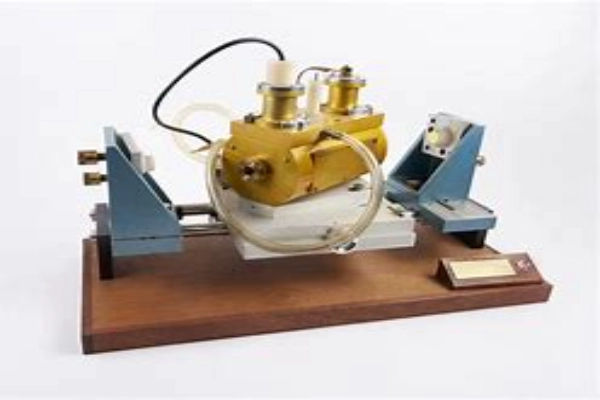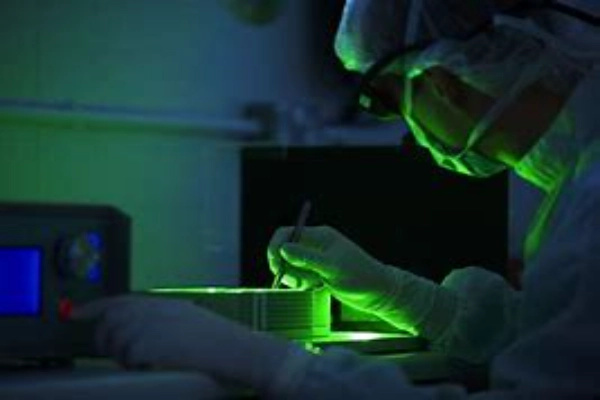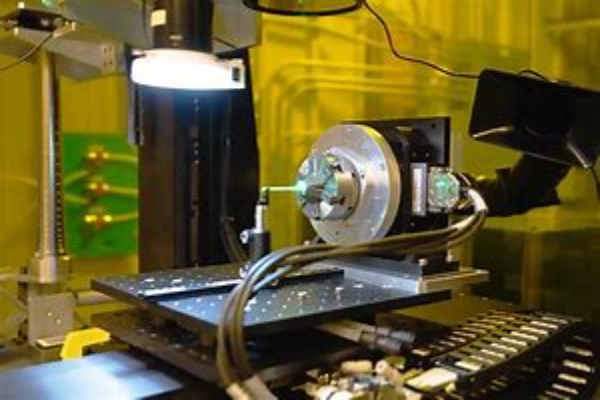Introduction to Laser Technologies
In the realm of photonics, lasers are instrumental devices with diverse applications, from medical surgeries to cutting-edge research. Different laser technologies cater to specific needs, and understanding their differences is crucial for potential applications.

Understanding High-Repetition-Rate Lasers
High-repetition-rate lasers, as the name implies, fire pulses at a very high rate, resulting in a dense series of short-duration pulses. These lasers have found significant applications in areas requiring rapid and continuous pulses of light.
Exploring the Nuances of Modern Laser Technologies
When delving deeper into the world of lasers, one quickly realizes that it’s not just about the emission of light, but more about how and when that light is emitted. This principle becomes especially evident when comparing femtosecond lasers and continuous wave (CW) lasers.
Femtosecond lasers have carved a niche for themselves in tasks that demand ultra-precision. Named for the duration of their pulses, which last only a few quadrillionths of a second, these lasers can produce light pulses with durations shorter than a picosecond. Imagine taking an hour and condensing it into a fraction of a second; that’s the level of brevity we’re talking about. This ultra-short pulse duration is what makes them especially valuable. For instance, when it comes to eye surgeries, even a minor error can be detrimental. Femtosecond lasers’ ability to produce highly concentrated and precise energy bursts ensures that surrounding tissues remain unaffected, focusing only on the target. Beyond medical applications, they are also employed in microfabrication, where the precision of material removal is essential.
On the other end of the spectrum, we have the continuous wave (CW) lasers. Instead of pulsing, these lasers emit a constant beam of light. This continuous output might seem less sophisticated than the rapid pulsing of other lasers, but it has its own set of advantages. In telecommunications, for example, the integrity and consistency of the transmitted signal are of utmost importance. Here, CW lasers shine. Their continuous emission ensures a steady stream of data, without the disruptions that pulsed lasers might introduce. Furthermore, in fields like optical trapping, the continuous nature of the CW lasers provides the consistent power required to manipulate tiny objects, like individual atoms or molecules, holding them in place with the force of light.
While both these lasers function on the fundamental principle of light amplification, their applications and advantages showcase the versatility of laser technology. Whether it’s the precise, controlled bursts of femtosecond lasers or the steady, unyielding beam of CW lasers, each serves its purpose, bringing forth advancements in science and technology.

Applications: Where Each Laser Excels
When we consider the vast array of applications that lasers have permeated over the years, it becomes evident that the innovation behind each laser type is tailored to its specific use cases. Delving into how each laser excels in its applications provides a fascinating glimpse into the world of photonics.
High-Repetition-Rate Lasers are particularly intriguing, with their ability to produce a rapid sequence of pulses. The unique nature of these lasers allows for the generation of a dense series of light pulses in quick succession. This high pulse rate is invaluable in fields like rapid imaging. For instance, in biological research, scientists often need to capture fast cellular or molecular events that transpire in mere milliseconds. The continuous and quick pulses from these lasers can illuminate these swift processes, enabling researchers to visualize them in real-time, something that was previously impossible. Moreover, in spectroscopy, where the interaction of light with matter is analyzed, the dense pulses of high-repetition-rate lasers can provide a much more detailed insight. By bombarding a specimen with these quick pulses, researchers can garner more information about its composition and behavior, enhancing the accuracy and richness of the spectral data.
Femtosecond Lasers stand apart in their own right due to their ultra-short pulse durations. The name itself is derived from the duration of their pulses, which are about a quadrillionth of a second. These lasers are a marvel when it comes to precision tasks. Consider the world of micromachining, where materials need to be processed on a micro-scale. The ultra-short pulses from femtosecond lasers allow for incredibly precise ablation or modification of materials without causing significant heat damage to the surrounding area. This precision also translates well into medical surgeries. A prime example is corrective eye surgeries, where the laser’s ability to make minuscule and accurate incisions is paramount. Furthermore, in the realm of nonlinear optics, which studies the interactions of light with matter at high intensities, femtosecond lasers play a pivotal role. Their pulses can induce various nonlinear phenomena, enabling the study and manipulation of light in ways that were once thought impossible.
Lastly, the Continuous Wave Lasers, as the name suggests, produce a continuous, uninterrupted stream of light. This makes them invaluable in scenarios where a steady beam of light is more beneficial than pulsed emissions. In the world of telecommunications, data needs to be transmitted over vast distances without interruption. CW lasers, with their unwavering emission, ensure that data flows consistently, maintaining the integrity of the information being transmitted. Similarly, in research labs worldwide, these lasers are employed for their consistent power, enabling steady observations over prolonged periods. Additionally, in some medical scenarios, such as therapeutic applications, the constant emission of CW lasers is favored for providing uniform treatment.
In summation, the realm of lasers is as varied as it is vast. The meticulous engineering and innovation behind each laser type ensure that they are perfectly suited for their intended applications. Whether it’s the rapid pulsing of high-repetition-rate lasers, the ultra-precise bursts from femtosecond lasers, or the unyielding beam from continuous wave lasers, each serves to push the boundaries of what’s possible in science and technology.

Unpacking the Pros and Cons of High-Repetition-Rate Lasers
High-Repetition-Rate Lasers, as technology progresses, continue to find their way into more and more applications due to their unique capabilities. These lasers stand out in the photonics domain, majorly due to their unparalleled pulse rates, offering capabilities far beyond traditional lasers. Their ability to capture rapid events in research and imaging is unmatched. Imagine recording the fleeting dance of molecules or the swift movement of electrons; these lasers bring the unseen, transient world into focus.
Moreover, they offer a remarkable degree of flexibility. One of the standout features is the capability to be tuned to a myriad of frequencies, making them adaptable tools for a diverse range of needs. Whether it’s altering pulse widths for specific experimental setups or adjusting frequencies to probe different materials, this adaptability ensures that they can be customized for a variety of applications. Add to this their efficiency – with dense pulses that leave fewer gaps, processes can be streamlined, often leading to quicker results and reduced energy consumption.
However, with strengths come certain challenges. One major concern is the significant heat generation. Due to their very nature of rapid pulsing, they produce immense amounts of heat. In many practical applications, this necessitates advanced cooling systems, which can add to the complexity and cost of setups. This heat generation, if not managed appropriately, could potentially impact the laser’s performance or the integrity of the materials being worked upon. Furthermore, while these lasers are unparalleled in many respects, they don’t always achieve the pin-point precision that femtosecond lasers offer. For tasks demanding extreme precision, such as certain microfabrications or delicate surgeries, the slight difference in precision levels can be pivotal.
In essence, while High-Repetition-Rate Lasers are undeniably powerful tools that have transformed numerous fields, like all technologies, they have their advantages and constraints. It’s essential to weigh these aspects based on the specific application at hand.

Choosing the Right Laser for Your Needs
When determining the right laser, consider the application’s precision requirements, desired pulse rate, and the importance of continuous output. Understanding the strengths and limitations of each laser technology will guide the right choice.
Future Prospects in Laser Technology
The field of photonics continues to grow, with each laser technology advancing and finding new applications. As research progresses, we can expect more efficient, versatile, and application-specific lasers in the future.

Conclusion
Lasers, with their diverse range and capabilities, have revolutionized numerous sectors. While high-repetition-rate lasers offer rapid pulse advantages, femtosecond and continuous wave lasers have their own unique strengths. By understanding these differences, one can harness the true potential of lasers for their specific needs.
FAQs
- What is the primary difference between high-repetition-rate lasers and femtosecond lasers?
- High-repetition-rate lasers focus on delivering numerous pulses in a short duration, while femtosecond lasers emphasize ultra-short pulse durations for precision.
- Are continuous wave lasers pulsed?
- No, continuous wave lasers produce a steady and uninterrupted light output.
- Why is cooling essential for high-repetition-rate lasers?
- Due to their rapid pulsing nature, these lasers can generate a lot of heat, making efficient cooling systems crucial.
- Which laser is best for telecommunications?
- Continuous wave lasers are commonly used in telecommunications due to their consistent output.
- Are high-repetition-rate lasers suitable for medical surgeries?
- While they have specific medical applications, femtosecond lasers are generally preferred for surgeries needing high precision.

Frank
Frank graduated from the University of Shanghai for Science and Technology, majoring in optics. As a technical engineer at Crylink Company, he deeply understands crystal materials and laser components.
Related Video(s) with this Article
Related Product(s) with this Article
Related Application(s) with this Article
